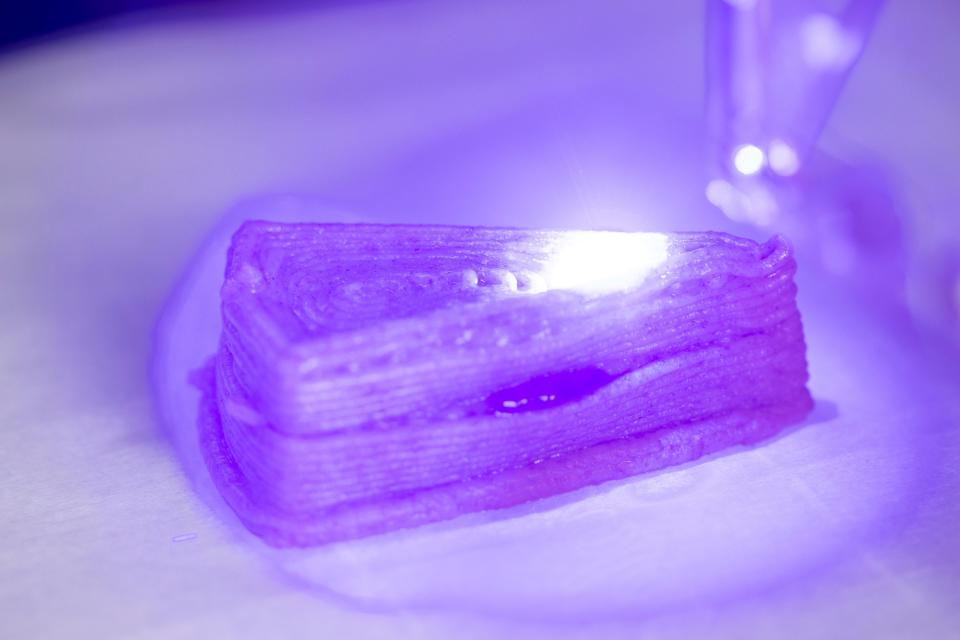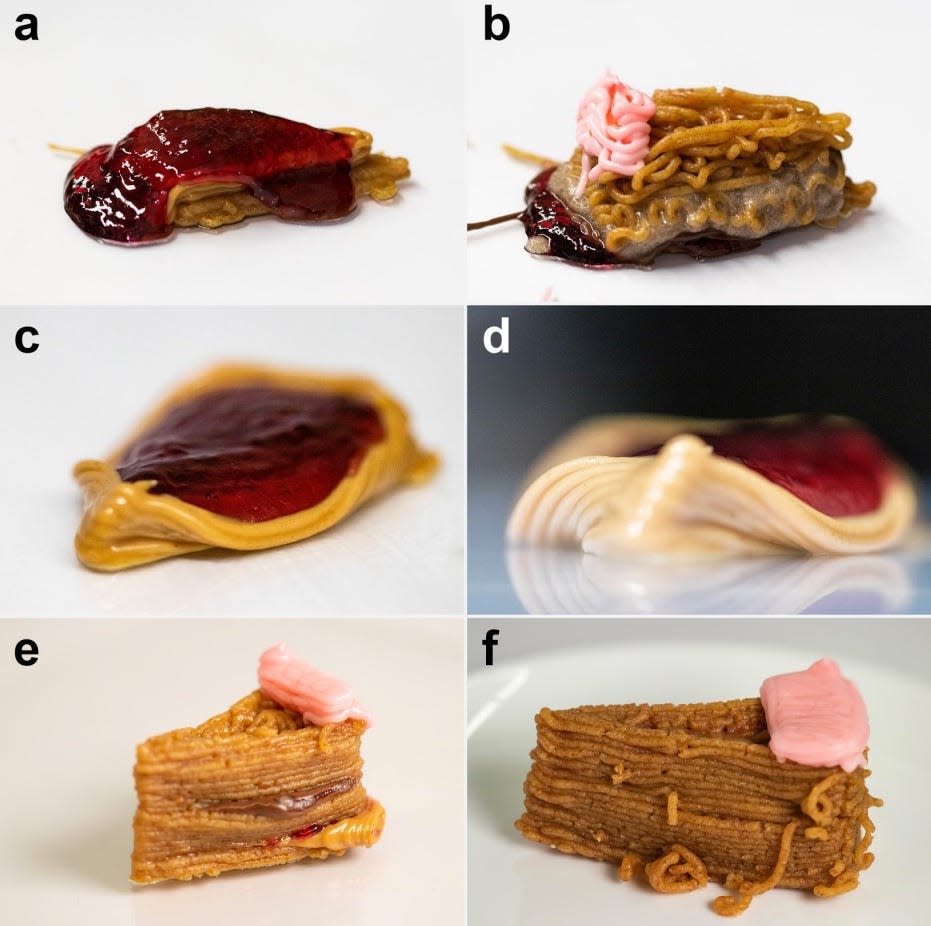Is 3D printing the future of food? Well, if you like cheesecake things are already cooking
The Star Trek food replicator it's not. But researchers at Columbia University in New York have created a 3D printer that makes cheesecake.
Mechanical engineers in the Creative Machines Lab at Columbia University have been experimenting with 3D-printed food ("food printers") and laser cooking of food since 2005. The Department of Defense has been working to develop 3D-printed MREs (Meals Ready-to Eat) that in the future could be paired with wearable sensors to meet soldiers' nutritional needs that day. NASA has also been experimenting with 3D-printed food for astronauts on long missions.
Until now, most 3D-printed foods have been made with uncooked ingredients, the researchers say. But in research published Tuesday in the journal npj Science of Food, the engineers describe how their 3D printer made a cheesecake from seven ingredients: graham cracker, peanut butter, Nutella, banana puree, strawberry jam, cherry drizzle, and frosting.
The CD turns 40: Inside the meteoric rise and fall of the shiny disc that changed music
Colorado scare: Mountain lion attacks man who was sitting in hot tub at rental home, officials say

A retrofitted, off-the-shelf 3D-printer was used; the printing head could pick up any of the seven food "inks" to add to the slice. A blue laser was used to brown and crust the top surface of the graham cracker paste, Jonathan Blutinger, the lead author of the study and a postdoctoral fellow in the lab, told USA TODAY.
"We chose to print a slice of cheesecake because it's a part of a larger cake, it's a shareable dessert, people have positive associations with it, and it's generally a layered structure," he said. "That being said, we didn't include 'cheese' in any one of the ingredients, so perhaps we should have renamed it."

Printed cheesecake tastes 'pretty sweet'
The seven-layer cake was "to our knowledge … a record setting number of ingredients in a single printed food product," the researchers wrote. "The design of our print became similar to constructing a home where floors, walls, and ceilings being the foundation (graham cracker) and inner pools (Nutella and peanut butter) holding softer ingredients within (banana and jelly)."
It took several recipes to get an acceptable slice with the jam overflowing the cheesecake's foundation at one point. They added graham cracker "walls" to "better support the structure," the researchers said.

The final result, "tasted pretty sweet – in more ways than one," Bluntinger said. "Each ingredient hits your palette at different times, and made us realize that you can really localize flavors throughout the printed structure to get different flavor sensations depending on how you approach eating the dessert."
3D-printed food could make foods more customizable – and possibly more nutritious, the authors said. “With more emphasis on food safety following the COVID-19 pandemic, food prepared with less human handling could lower the risk of foodborne illness and disease transmission," Bluntinger said in a press release describing the research.
3D printing is "particularly practical for the plant-based meat market, where texture and flavor need to be carefully formulated to mimic real meats,” he said
However, before consumers can take part in the 3D food printing revolution, there's going to need to be "an ecosystem of supporting industries," he said.
The future of printing food
You'll likely pay more for your first 3D food printer than you did for your air fryer.
When the first ones arrive, perhaps in five years or so, they will likely come in at less than $1,000, Bluntinger said.
He expects restaurants will begin using food printers in the next few years, "for digital gastronomy and one-off food add-ons to class-up a dish or make something aesthetically appetizing."
The Creative Machines Lab engineering lab has already built another machine "that can print with up to 18 ingredients and cook with two different lasers," Bluntinger said. "So we are working towards an 18-ingredient print that combines paste ingredients as well as powder and liquids as well."
Our @MechCU researchers @blutinger and @hodlipson worked with @CooperNutrition to explore the benefits and drawbacks of 3D-printed food technology and the future landscape of our kitchens. https://t.co/RykD3ef6HL @ColumbiaScience @Columbia pic.twitter.com/HxdoI4yfBh
— Columbia Engineering (@CUSEAS) March 21, 2023
Follow Mike Snider on Twitter: @mikesnider.
What's everyone talking about?: Sign up for our trending newsletter to get the latest news
This article originally appeared on USA TODAY: Food of the future: 3D printers can already make cake. What's next?

 Yahoo Movies
Yahoo Movies 
